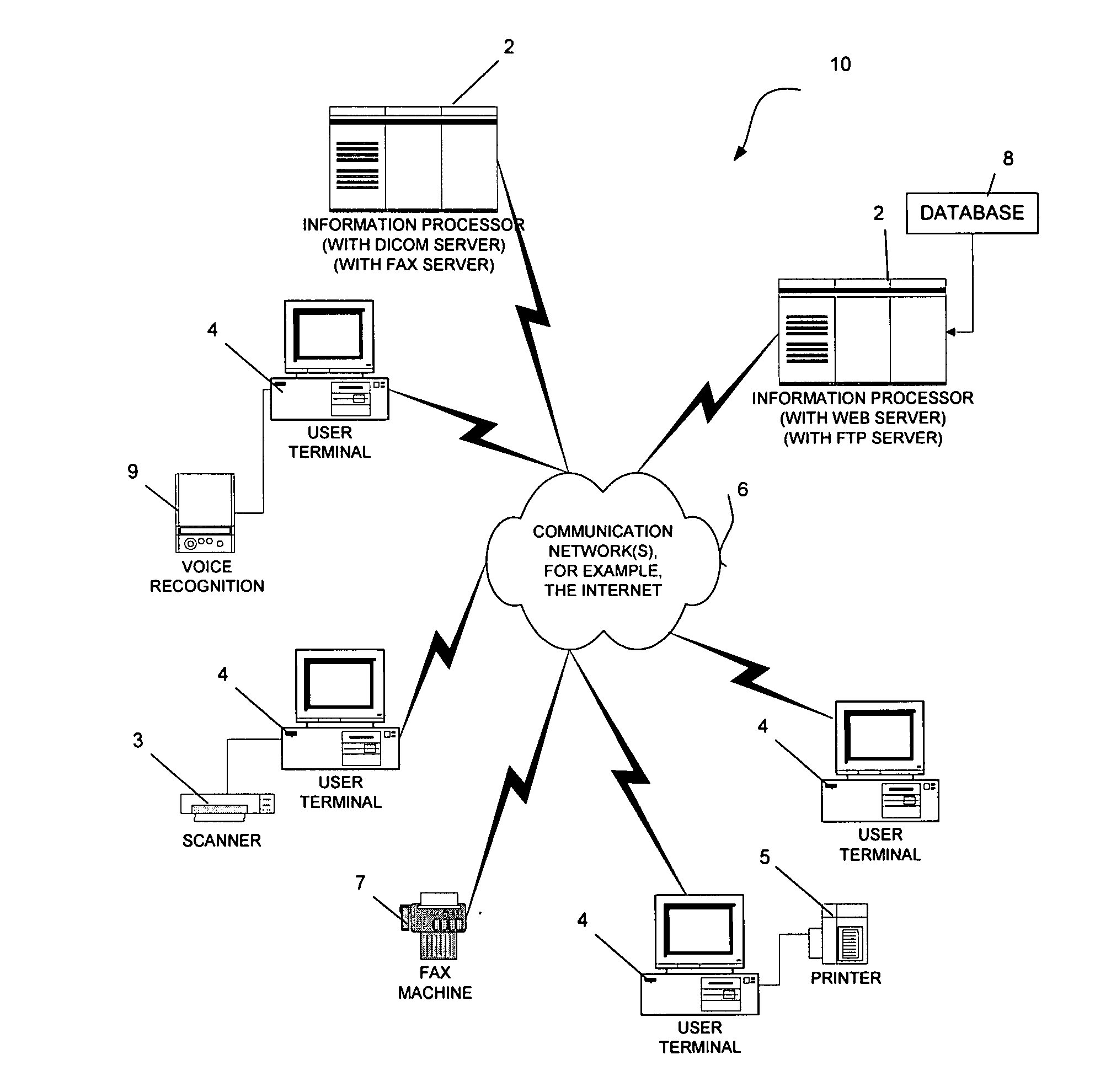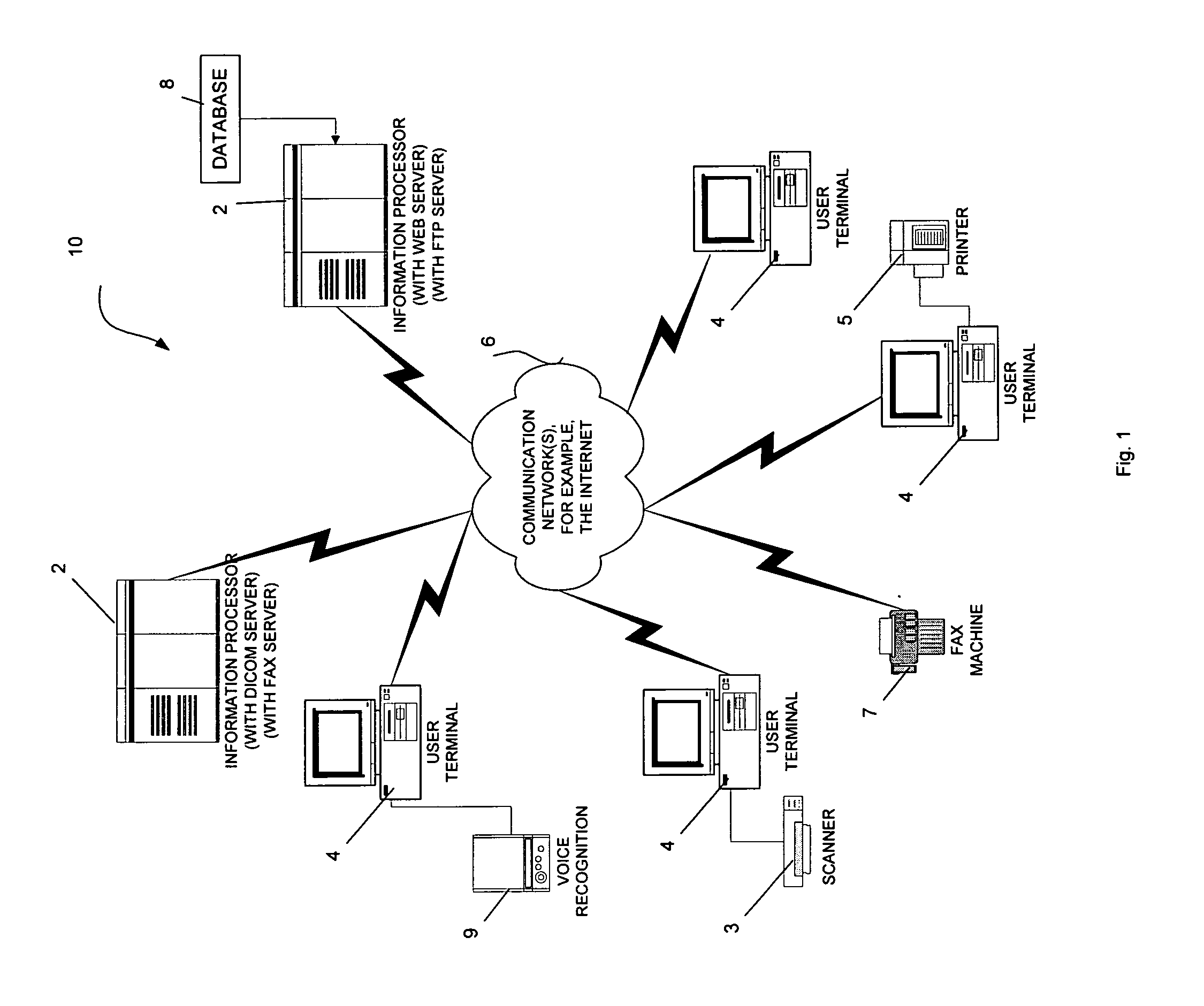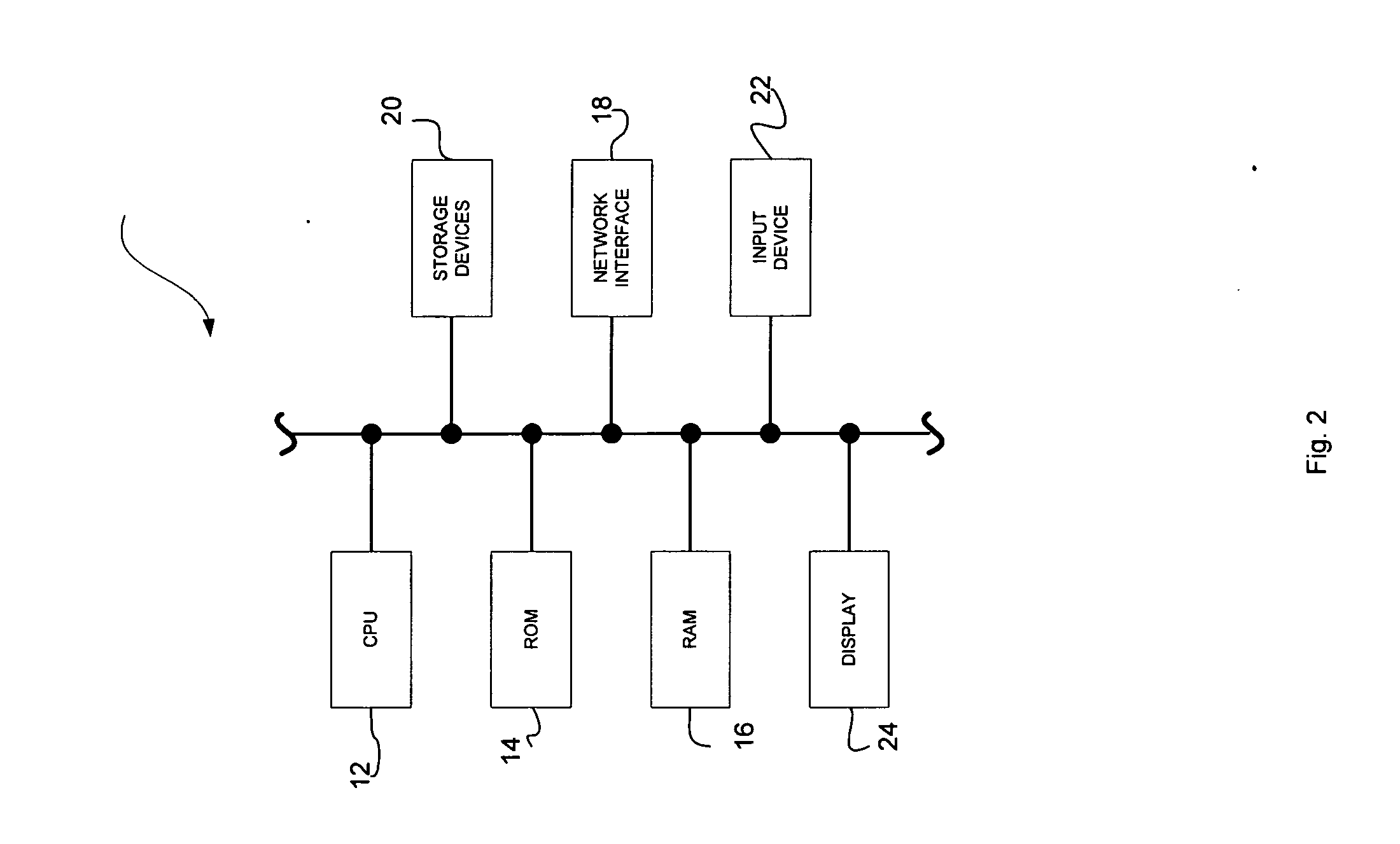System and method for integrating ancillary data in DICOM image files
- Summary
- Abstract
- Description
- Claims
- Application Information
AI Technical Summary
Benefits of technology
Problems solved by technology
Method used
Image
Examples
Embodiment Construction
[0030] The present invention comprises a system and method for incorporating paperwork / handwritten (analog) clinical patient information into digital DICOM image files for interpretation by the radiologist or other physician. In an example embodiment, the present invention comprises a suite of software modules which reads and incorporates paperwork / handwritten (analog) clinical patient information directly integrating them into the DICOM image examination files.
[0031] In an example embodiment of the present invention, patient demographic information is output as a separate file after a patient examination file is acquired by a DICOM server. This output file comprised of key available DICOM tags, contains demographic information of the patient along with detailed information regarding the examination itself. A key indexing number, for example, labeled the “Study UID” number, is preferably included among these DICOM tags in the output file. The present invention imports the output fi...
PUM
 Login to View More
Login to View More Abstract
Description
Claims
Application Information
 Login to View More
Login to View More - R&D
- Intellectual Property
- Life Sciences
- Materials
- Tech Scout
- Unparalleled Data Quality
- Higher Quality Content
- 60% Fewer Hallucinations
Browse by: Latest US Patents, China's latest patents, Technical Efficacy Thesaurus, Application Domain, Technology Topic, Popular Technical Reports.
© 2025 PatSnap. All rights reserved.Legal|Privacy policy|Modern Slavery Act Transparency Statement|Sitemap|About US| Contact US: help@patsnap.com



